Garmin Dash Cam 66W review
The perfect compact dash cam for those on a mid-range budget, with high-quality video, driver assistance features, and a wide-angle lens

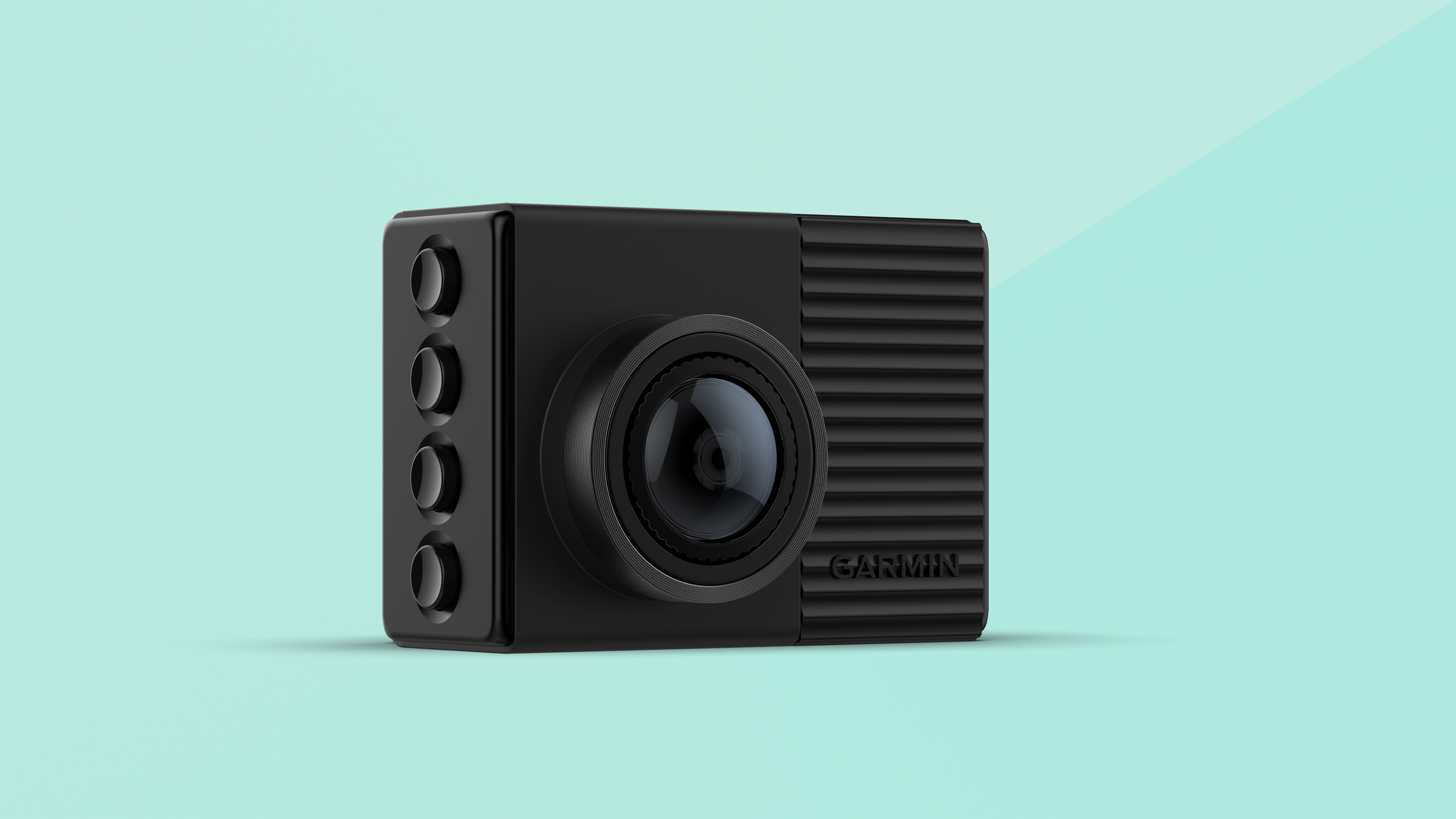
The Garmin 66W is a top-quality dash cam which records in higher than Full HD, has GPS, Bluetooth and Wi-Fi, is compact and subtle with a simple mounting system, and even includes a range of useful driver assistance features. The new, much wider 160-degree lens makes a big difference over its predecessor, the Dash Cam 55.
-
+
Subtle, compact design
-
+
Good video quality
-
+
Easy to mount and review
-
-
Runs quite hot
-
-
Voice controls often unnecessary
Why you can trust T3

We named the Garmin Dash Cam 66W's predecessor as the best of 2018, awarded it five stars, and gave it the prestigious T3 Platinum Award. Safe to say, we rather liked it – and have high expectations for its successor.
New for 2019, the Dash Cam 66W takes what we loved about the Dash Cam 55 - a compact design, good video quality and intuitive driver assistance features - and turns everything up a notch or two.
- These are the best dash cams
As a result, this isn’t a day-and-night upgrade, but takes the best of 2018 and makes it even better.
Want to know just how much better than 66W is than the 55? Read on to find out...
Garmin Dash Cam 66W review: Design
Pick up the Dash Cam 66W and you will immediately see the family resemblance with last year’s 55. The two models are almost identical in size and appearance, save for the more compact lens on the newer model, and deeper grooves to parts of the body which we suspect act like heat sinks to keep the insides cool.
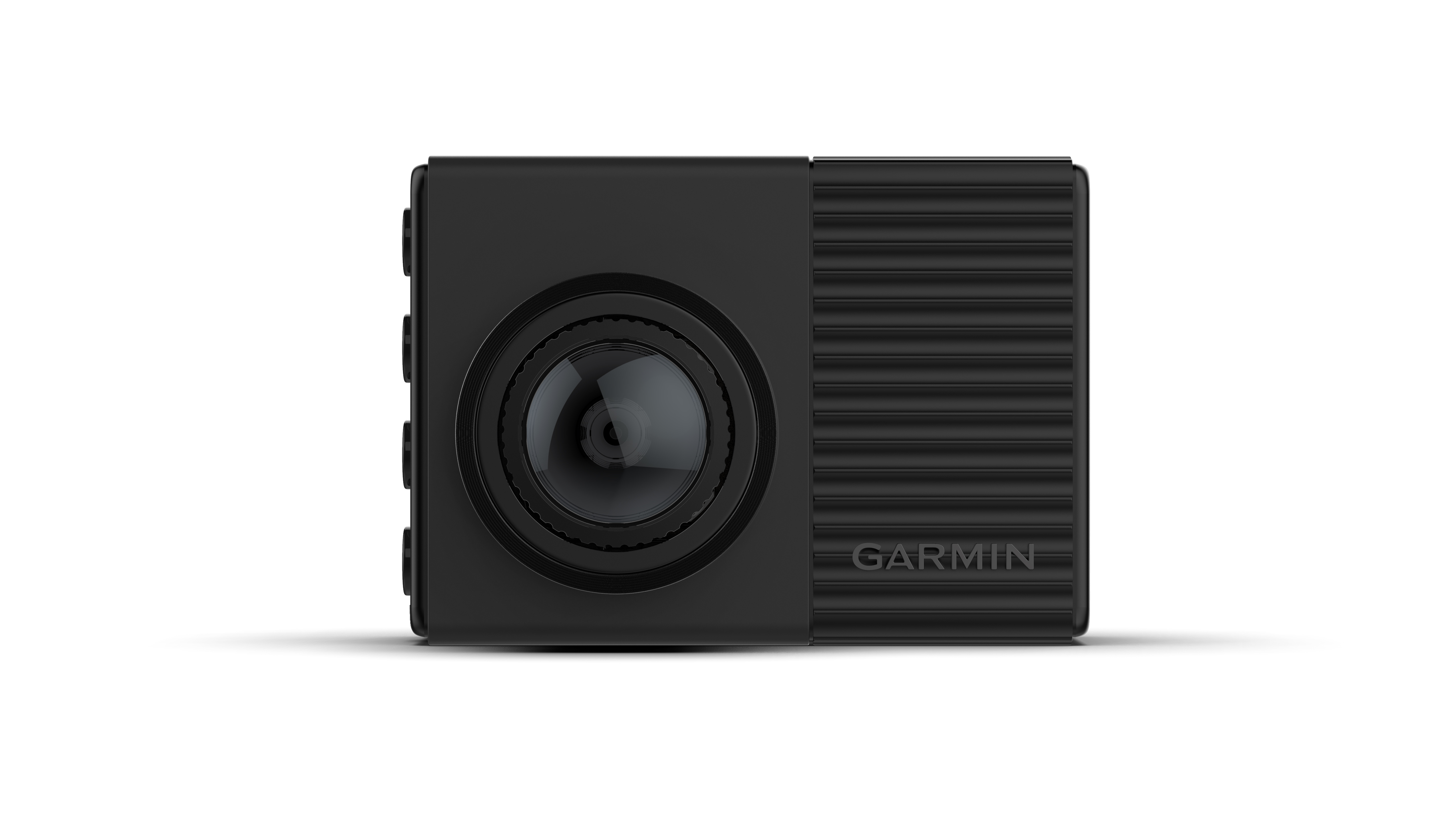
Around the size of a matchbox, the Dash Cam 66W is beautifully compact and can be hidden neatly behind the central rear view mirror of most vehicles. Speaking of subtlety, Garmin has removed a bronze ring fitted to the lens of the Dash Cam 55, meaning the all-black 66W is less obvious when left in a parked car, which should hopefully make it less likely to catch the eye of an opportunistic thief.
Just like with the 55, the 66W has four buttons on one side for navigating through the menu system, a 2-inch display with a resolution of 320 x 240 on the back, a microUSB port for power on the other side, and a microSD card slot underneath.
The top edge is home to a ball-and-socket connection for Garmin’s universal windscreen mount. This is one of the simplest but well-engineered mounting systems we’ve seen on any dash cam, as it takes up very little space, allows for adjustments in any direction, is easy to remove and attach to the camera, and fits to the windscreen with a magnet.
All you have to do is peel the back off a sticky pad the size of a coin, then fix it to your windscreen, ideally high up and in the middle. This stick pad is attached to a magnet, which holds the dash cam’s mount securely in place. As such, when the camera is removed all that’s left behind on the windscreen is the coin-sized magnet.
As for power, the Dash Cam 66W comes with a pair of microUSB cables (1.4m and 4m) and an adapter which fits into your car’s 12V lighter socket and provides two USB ports - one for the camera and one for something else, like your smartphone.
Garmin Dash Cam 66W review: Features
For anyone who has read our review of the Dash Cam 55 from 2018, this part of the 66W’s review will start to sound very familiar. That’s because Garmin has given the new model the same feature set as its predecessors.
This means video is constantly recorded and split into files each 60 seconds long. Once your microSD card gets full, the oldest videos will be recorded over with new footage.
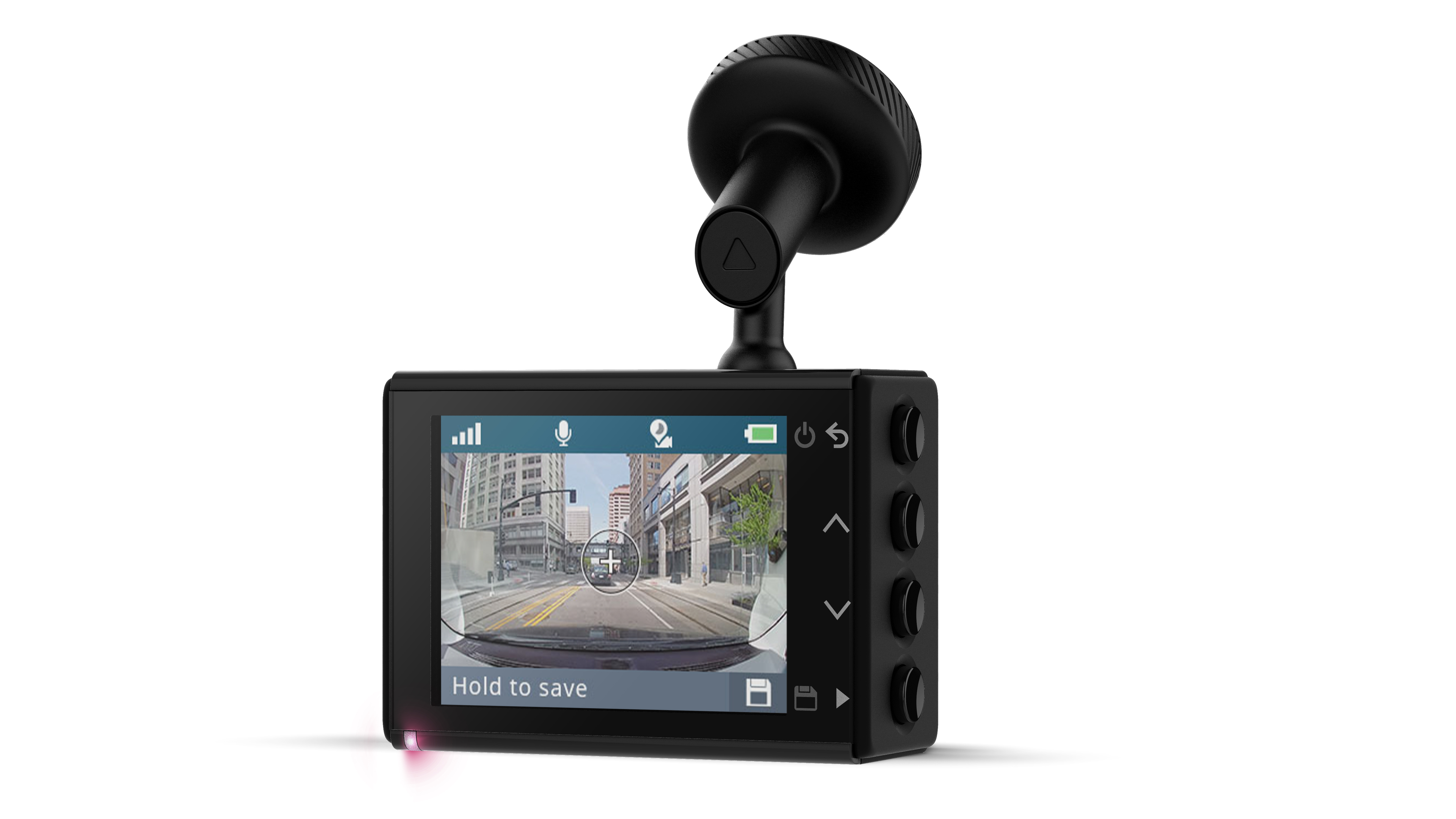
Each video includes date, time, GPS coordinates and current speed in the lower-left corner, and any of these can be switched off from within the settings menu, along with audio recording.
When a collision is detected by the camera’s G-sensor, that portion of video is saved and will not be overwritten by new recordings.
As for extra features beyond these dash cam essentials, the Garmin 66W offers forward collision warning, lane departure warning, and alerts you if the vehicle in front sets off and you don’t.
How useful you find these will depend on whether you can see the Garmin’s display while driving. For us, we positioned the camera in a way that its display was obscured by the rear view mirror, so unless we memorised what bleep meant what, the camera’s alerts weren’t too helpful.
That said, a loud alarm grabs your attention even if you’re not sure exactly what it is. We found the ‘go’ alert useful on a couple of occasions where we were adjusting the radio or navigation system, and hadn’t noticed the traffic had started moving.
The Dash Cam 66W can also alert you about nearby speed cameras and red light cameras at junctions, but again you can only really benefit from these if you can glance up and see the display.
Voice controls allow you to save pictures or one-minute video clips by speaking to the dash cam. Just like with a smart speaker at home, you say ‘Okay Garmin’ then issue an instruction. As well as starting or stopping a recording, you can start a ‘Travelapse’ video - or what you and we would call a timelapse video.
The voice system works well enough, but we found it would mistake other words for ‘Okay Garmin’ a little too often. When chatting with a passenger the camera will sometimes respond and act on a command it thought it had heard. Again, unless you can clearly see the display each time this happens, the beeps and alerts can become confusing.
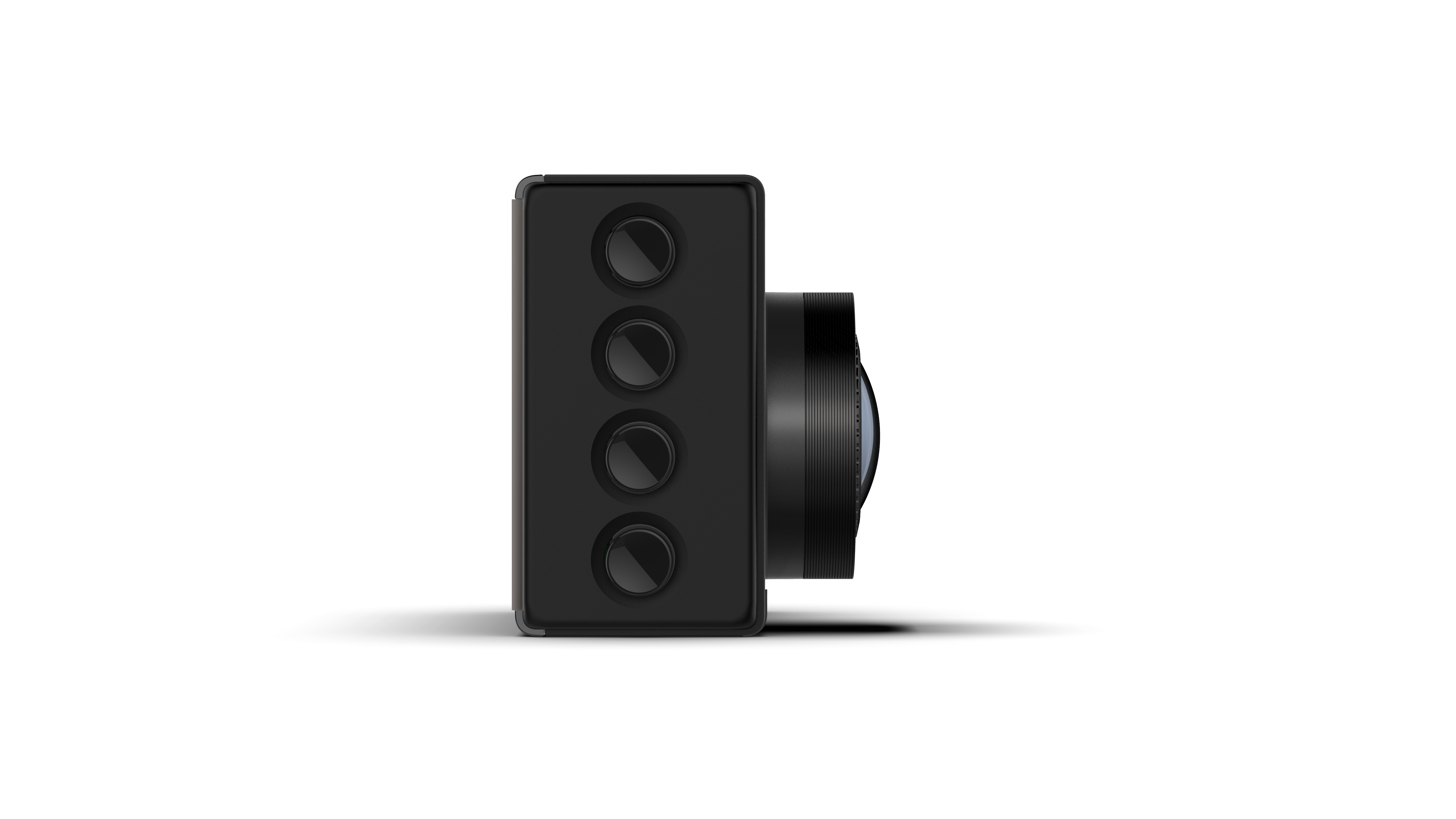
But we must stress, we feel dash cams work best when they are non-intrusive and left to get on with the job of recording video which could become crucial evidence. Personally, we prefer to switch off the extra features and not look at the camera. But if you can position the camera differently and want to use the driver assistance features and voice control, then it works just fine - albeit less so when chatting to your passenger.
Finally, there is a parking mode which records when you park up and switch the car off. However, while the camera comes with the software to switch this on, it requires a £30 hard-wiring kit for giving the camera constant power from your car’s battery.
The camera includes its own small battery, but the company claims this is only good for up to 30 minutes of use per charge. And given how hot the camera runs, we think even this is a little optimistic.
Garmin Dash Cam 66W review: Video quality
Video quality options for the Dash Cam 66W are broadly the same as was offered by the Dash Cam 55. The default option is 1080p Full HD at 60 frames per second, while other options include 1440p with HDR at 30 frames per second, 1080p with HDR at 30 fps, and 720p with HDR at 30 fps.
It’s a little frustrating that you can’t have a combination of these to create 1440p with HDR at 60 fps, so you have to pick which you think will produce the best video for your situation. A higher frame rate will produce smoother video and should help improve the clarity of individual frames - such as when trying to read the number plate of a vehicle that caused a collision. HDR helps to boost image quality when light conditions vary, pulling out details on shadowed areas without over-exposing lighter parts of the frame.
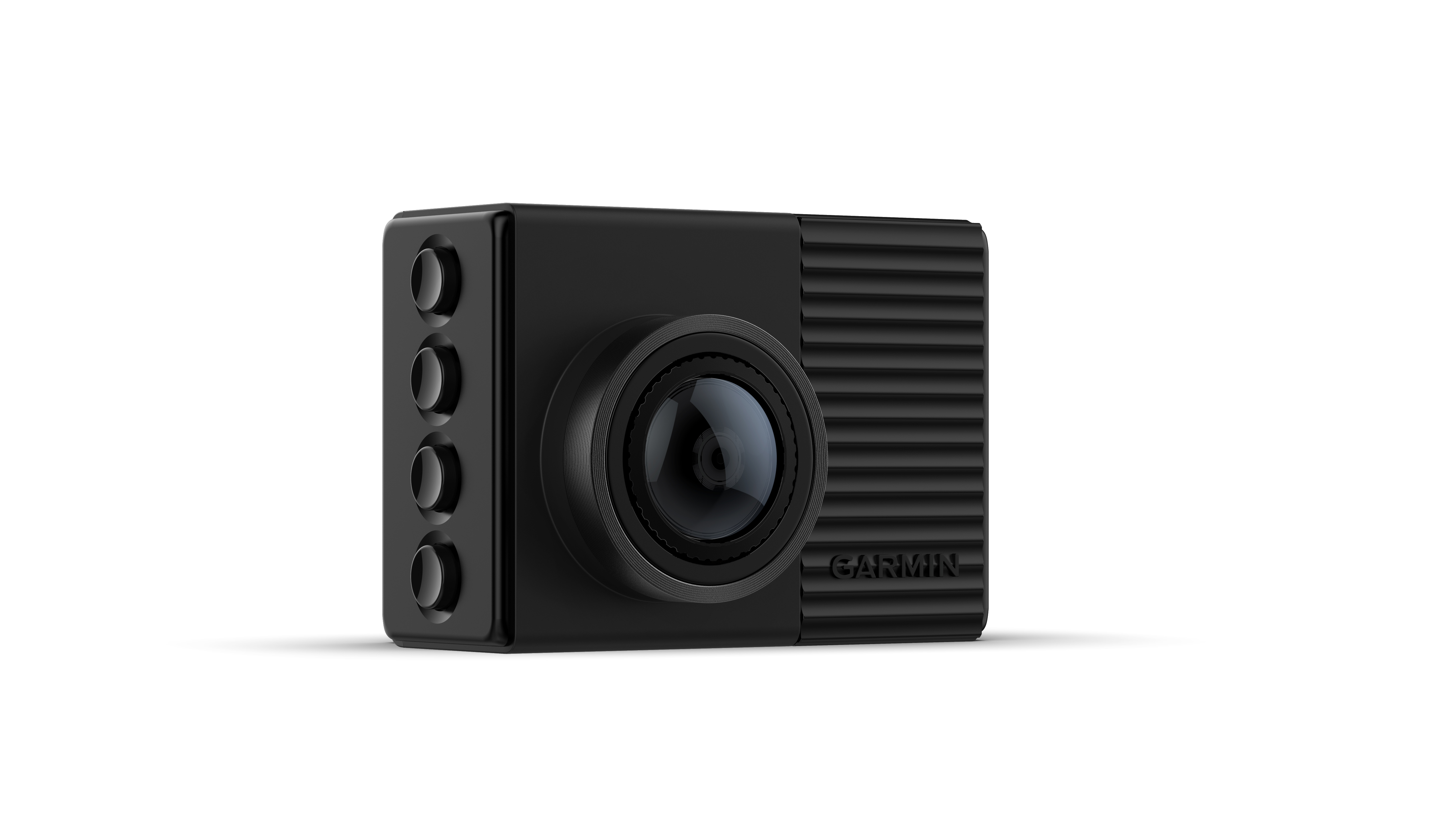
Given the constantly changing lighting as you drive along most roads - the sun dappling through trees, for example - we suggest you pick a video option with HDR enabled. Given you can have HDR with the camera’s highest resolution, 1440p, this is what we prefer to use, while suffering the drop in frame rate from 60 to 30 per second.
What’s new with the Dash Cam 66W is its wide-angle lens, which shoots at 180 degrees, compared to 122 degrees with the Dash Cam 55. This is a significant difference and means your video includes a much wider view across the front of you vehicle. We found it was wide enough to see a little to the side of our car, which should help to capture footage of someone t-boning us at a junction, or a vehicle causing a collision by drifting into our lane.
After analysing video shot by the Dash Cam 66W, we found it to be a little grainier than the 1440p resolution would suggest, but we suspect this is a byproduct of Garmin hoping a slightly overexposed and noisier video will offer more detail than something a bit darker.
There was also some graininess at night, but the detail was still excellent, especially for a dash cam costing (just) under £200.
Garmin Dash Cam 66W review: Software
The software of the Dash Cam 66W is very similar to that of the older 55. It is navigated via four buttons on the side of the camera (the display is not touch-sensitive), and is fairly intuitive but not the best. It isn't immediately obvious which button selects an option and which goes back to the previous menu, but once you’ve worked this out it’s a simple system.
You will also find that, as with most dash cams, once you have set up the Garmin the way you want, you’ll never touch it again. The beauty of these products is they are truly ‘set-it-and-forget-it’.
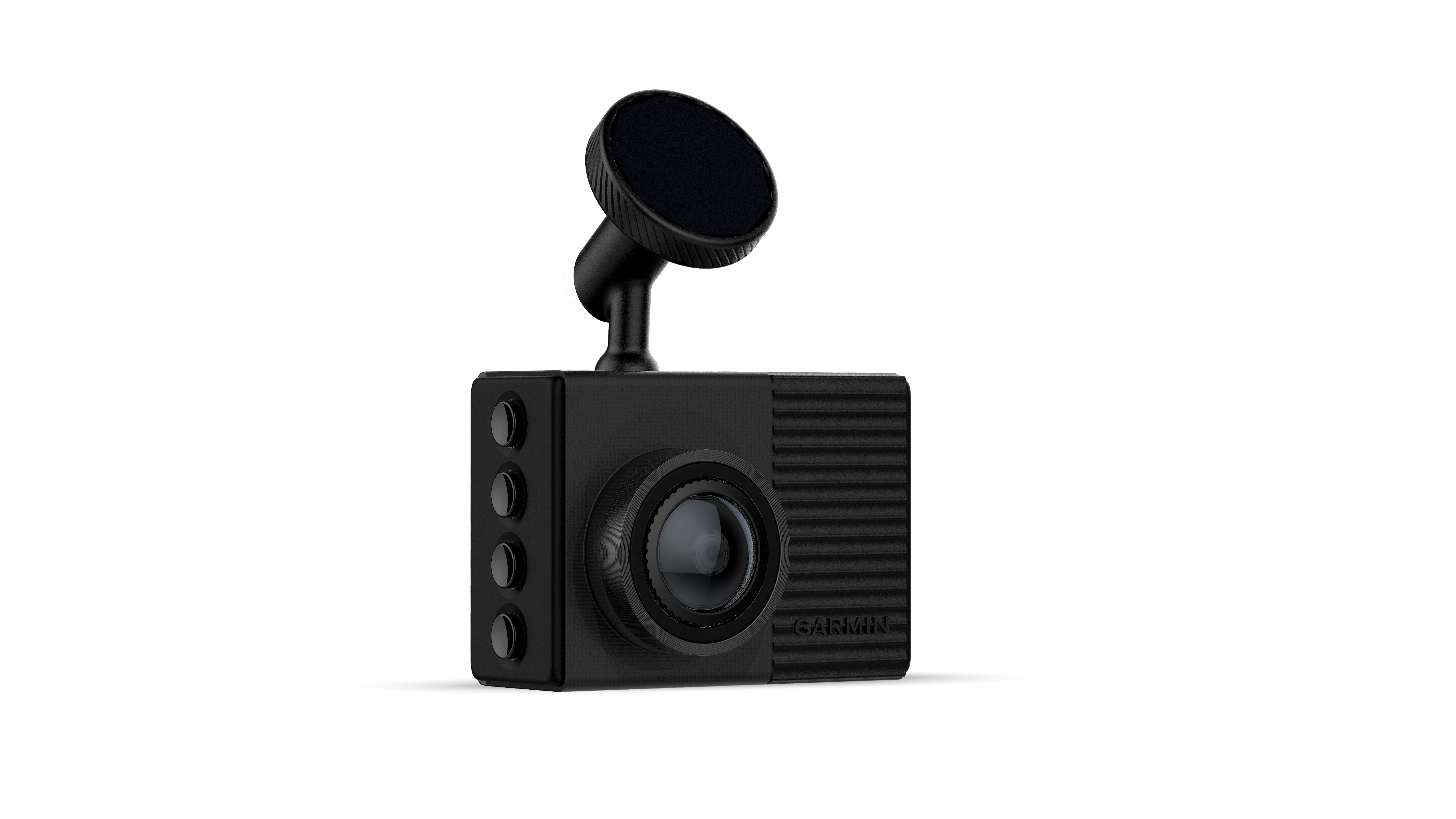
The software can also be used to view saved video and photos via a gallery arranged in reverse chronological order.
Finally, the free Garmin Drive app for iOS and Android gives you a convenient way to connect to the camera over Bluetooth, then transfer video over a direct Wi-Fi connection to your smartphone or tablet. This is fine, but for us we find it just as easy - perhaps even quicker - to grab the microSD card and slot that into our computer to keep a copy of any important video recordings.
Garmin Dash Cam 66W review: Verdict
The Garmin 66W is an excellent dash cam which is more compact than most, with good video quality, voice control, and convenient driver assistant features. The small size and discreet design means we would feel comfortable leaving the camera permanently installed in our car without risk of it being stolen, and for drivers who want zero distractions it can be hidden behind the rear view mirror.
On a similar note, the driver assistance and voice control system can be switched off if you want, leaving the camera to silently get on with its job. If you’d prefer to use the assistance features then they work fine, and provide clear and useful advice via the camera’s speaker and display - like a nudge to get going when the traffic ahead has set off.
The simple and secure windscreen mounting system is as good as ever, and video quality is very good, during the day and at night. The much wider lens compared to the Dash Cam 55 is a very welcome upgrade and makes a real difference to footage captured. No one really needs to upgrade from 55 to 66W, but if you're looking for the best Garmin dash cam, this is the one to get.
Sign up to the T3 newsletter for smarter living straight to your inbox
Get all the latest news, reviews, deals and buying guides on gorgeous tech, home and active products from the T3 experts
Alistair is a freelance automotive and technology journalist. He has bylines on esteemed sites such as the BBC, Forbes, TechRadar, and of best of all, T3, where he covers topics ranging from classic cars and men's lifestyle, to smart home technology, phones, electric cars, autonomy, Swiss watches, and much more besides. He is an experienced journalist, writing news, features, interviews and product reviews. If that didn't make him busy enough, he is also the co-host of the AutoChat podcast.
-
 Warning: Ciele’s refreshed Elite Collection may cause excessive garment envy on race day
Warning: Ciele’s refreshed Elite Collection may cause excessive garment envy on race dayFlex on your run crew with Ciele’s latest drop
By Matt Kollat Published
-
 Smeg adds a touch of navy sophistication to its iconic breakfast set
Smeg adds a touch of navy sophistication to its iconic breakfast setIt's a minimalist's dream
By Lizzie Wilmot Published
-
 My most anticipated Netflix movie of the year gets a wild new trailer
My most anticipated Netflix movie of the year gets a wild new trailerHavoc looks pretty unbelievable
By Max Freeman-Mills Published